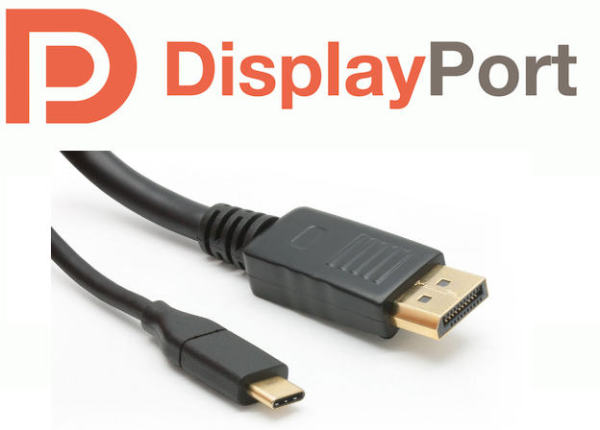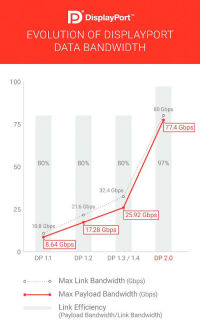[11:25 Mon,18.January 2021 by Thomas Richter] |
About 1 1/2 years ago, the Video Electronics Standards Association (VESA) introduced the new Actually, the first monitors that support DisplayPort 2.0 should be on the market by the end of 2020, but they will be delayed due to the Corona crisis. While DisplayPort 2.0 monitors are already in development, restrictions enacted to curb COVID19 have prevented the so-called PlugTests from taking place - meetings where hardware developers from different companies gather to test the interoperability of their implementations of a new standard in practice with various devices.  DisplayPort 2.0 via DisplayPort and USB-C. This has set the market launch way back - the next meeting is now scheduled for spring in Taiwan and the market launch for the sale of monitors with DisplayPort 2.0 is not until the end of 2021. However, graphics cards that support the new DisplayPort standard still have to appear before then - the current (top) models like the new Nvidia RTX 30s do not. The first devices that support the "DisplayPort Alt Mode 2.0", which enables the control of monitors via USB 4 (and USB-C port), should also appear in 2021. This delay of DisplayPort 2.0 has now given the HDMI 2.1 interface a head start in the market, as it already enables the display of 10K as well as 8K at 60Hz and 4K at 60Hz. DisplayPort 2.0 (like USB 4.0) will be based on Thunderbolt 3. Since Intel and Apple have released this standard, other manufacturers will also offer corresponding solutions. Nevertheless, all features of DisplayPort 1.4a will still be supported. The integrated compression technology, which has been named Display Stream Compression (DSC), should be exciting. This should enable much higher data rates, such as 16K (15360x8640) with 60Hz and 10-bit 4:4:4. The quality is described as "visually lossless". Via multi-stream protocol, several monitors can also be connected serially via a DisplayPort output. In such a case, two 8K/60Hz or four 4K/120Hz displays can be controlled via a single DisplayPort 2.0 output using DSC. DisplayPort 2.0 will also work via native DisplayPort ports as well as via USB Type-C in DisplayPort Alt Mode. Bild zur Newsmeldung:
deutsche Version dieser Seite: Monitore mit DisplayPort 2.0 verspäten sich stark |






